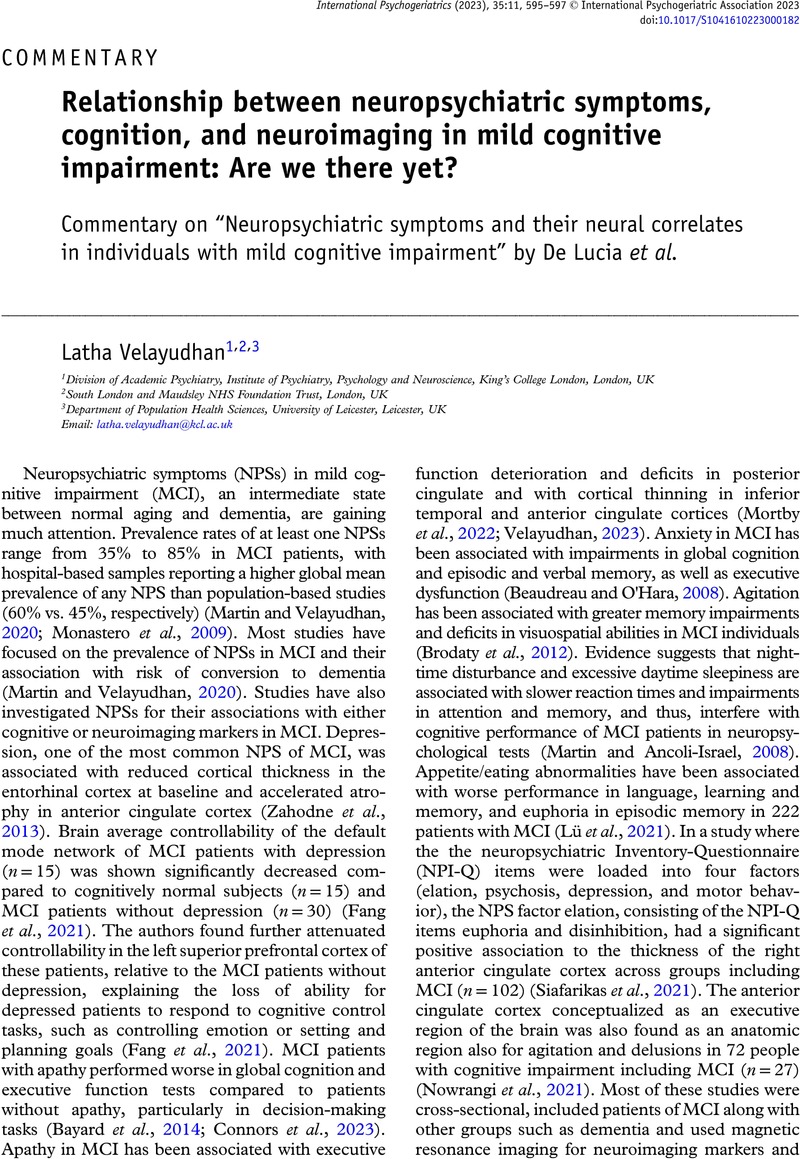Article contents
Relationship between neuropsychiatric symptoms, cognition, and neuroimaging in mild cognitive impairment: Are we there yet?
Commentary on “Neuropsychiatric symptoms and their neural correlates in individuals with mild cognitive impairment” by De Lucia et al.
Published online by Cambridge University Press: 23 February 2023
Abstract

- Type
- Commentary
- Information
- International Psychogeriatrics , Volume 35 , Special Issue 11: Issue Theme: Neuropsychiatric Symptoms of Mild and Major Neurocognitive Disorders , November 2023 , pp. 595 - 597
- Copyright
- © International Psychogeriatric Association 2023
References
- 1
- Cited by


